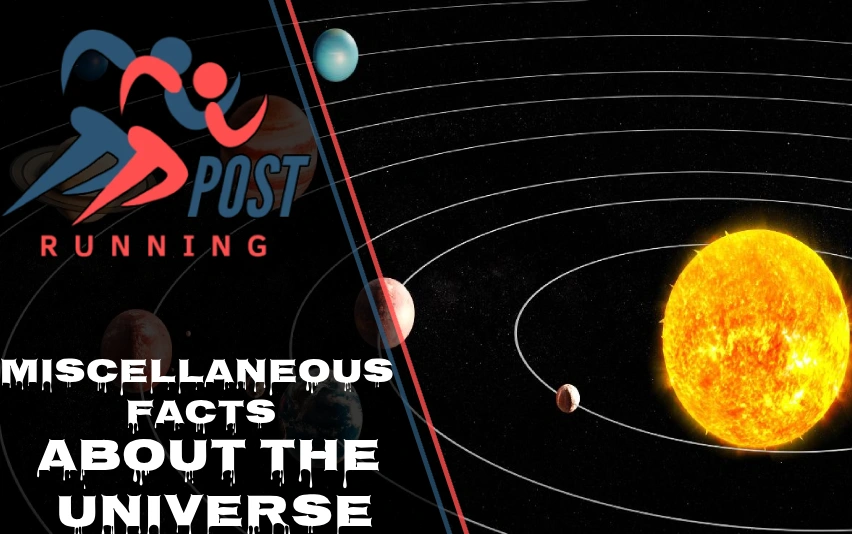The universe, a vast expanse of space and time, holds countless mysteries and marvels. From its mind-boggling size to its intricate composition, there’s no shortage of fascinating facts about our cosmic home. This article delves into miscellaneous facts about the universe, offering a glimpse into the wonders that surround us and the questions that continue to perplex scientists and stargazers alike.
Introduction
When we gaze up at the night sky, we’re looking at just a tiny fraction of the universe’s grandeur. The universe, encompassing all of space, time, and their contents, is a subject that has captivated humans for millennia. From ancient astronomers to modern-day astrophysicists, our quest to understand the cosmos has led to remarkable discoveries and even more intriguing questions.
In this exploration of miscellaneous facts about the universe, we’ll journey through its composition, age, size, and unique characteristics. We’ll uncover surprising details about the cosmos that might change your perspective on our place in this vast expanse. So, buckle up for a cosmic ride as we unravel some of the universe’s most fascinating secrets!
Composition of the Universe
One of the most surprising miscellaneous facts about the universe is its composition. Contrary to what our eyes might tell us, the visible matter we can observe makes up only a tiny fraction of the universe’s total content. Let’s break it down:
- Ordinary Matter: This is the stuff we’re familiar with – stars, planets, gas clouds, and everything we can see or detect with our instruments. Surprisingly, it accounts for only 4.84% of the universe’s total composition. That’s right, everything we can observe is just a drop in the cosmic ocean!
- Dark Matter: About 25.8% of the universe is composed of dark matter. This mysterious substance doesn’t interact with light or other forms of electromagnetic radiation, making it invisible to our current detection methods. Scientists infer its existence through its gravitational effects on visible matter.
- Dark Energy: The lion’s share of the universe – about 69.2% – is made up of dark energy. This enigmatic force is responsible for the accelerating expansion of the universe. Its nature remains one of the biggest mysteries in modern physics.
This breakdown of the universe’s composition is one of the most intriguing miscellaneous facts about the universe. It highlights how much we still have to learn about our cosmic home. The fact that over 95% of the universe is made up of substances we can’t directly observe or fully understand is a humbling reminder of the vastness of cosmic mysteries yet to be solved.
Age and Size
When it comes to miscellaneous facts about the universe, its age and size are truly mind-boggling. Let’s put these cosmic dimensions into perspective:
Age: The universe is approximately 13.8 billion years old. To put this in context, if the entire history of the universe were compressed into a single year, human civilization would only appear in the last 14 seconds of December 31st!
Size: The observable universe spans a diameter of over 150 billion light-years. Remember, a light-year is the distance light travels in one year – about 9.46 trillion kilometers or 5.88 trillion miles. So, the size of the universe is truly beyond human comprehension.
Galaxy Count: Within this vast expanse, the observable universe contains an estimated 2 trillion galaxies. Each of these galaxies, in turn, contains billions of stars. Our own Milky Way galaxy is home to an estimated 100-400 billion stars!
These figures are not just miscellaneous facts about the universe; they’re a testament to its incomprehensible scale. They challenge our understanding of space and time, reminding us of how small we are in the grand cosmic scheme.
Interesting Facts
The universe is full of fascinating phenomena that often sound more like science fiction than reality. Here are some miscellaneous facts about the universe that might surprise you:
- Spacesuit Prep Time: It takes astronauts about six hours to put on a spacesuit. This isn’t just a matter of slipping into a fancy outfit. The process involves careful checks and adjustments to ensure the suit will protect the astronaut in the harsh environment of space.
- Galactic Black Holes: Every galaxy has a supermassive black hole at its center, each weighing more than millions or even billions of suns. Our Milky Way’s central black hole, Sagittarius A*, is about 4 million times the mass of our sun!
- Cosmic Microwave Background: The entire universe is filled with the Cosmic Microwave Background (CMB), which is essentially leftover heat from the Big Bang. This omnipresent radiation is a crucial piece of evidence supporting the Big Bang theory.
- Solar Neutrinos: Each second, about 100 billion neutrinos from the Sun pass through your thumbnail. These subatomic particles are so small and interact so weakly with matter that they can pass through entire planets without stopping.
- Earth’s Uniqueness: As far as we know, Earth is currently the only planet with confirmed life. While we’ve discovered thousands of exoplanets (planets outside our solar system), we haven’t yet found definitive evidence of life elsewhere.
These miscellaneous facts about the universe highlight its complexity and the many wonders it holds. From the microscopic world of subatomic particles to the macroscopic realm of galaxies and black holes, the universe continues to amaze and perplex us.
Temperature and Evolution
The temperature of the universe and its evolution over time are fascinating aspects of cosmic history. Here are some miscellaneous facts about the universe related to its thermal journey:
- Early Heat: In its earliest moments after the Big Bang, the universe was unimaginably hot. Temperatures reached billions of degrees Kelvin (K), far hotter than the center of the hottest stars we know today.
- Cooling Expansion: As the universe expanded, it cooled. This cooling allowed for the formation of atoms, then stars and galaxies. It’s a bit like how a can of compressed air gets cold when you spray it – as the universe expanded, it cooled.
- Current Temperature: Today, the average temperature of the universe is about 2.725 Kelvin, or about -270.425°C (-454.765°F). This is just slightly above absolute zero, the lowest possible temperature where all motion of particles stops.
- Cosmic Microwave Background: This current temperature is measured through the Cosmic Microwave Background radiation, which fills all of space. It’s like an echo of the Big Bang that we can still detect today.
- Future Cooling: The universe is expected to continue cooling as it ages and expands further. Some theories suggest it might eventually reach a state called “heat death” where no useful energy remains.
These temperature-related miscellaneous facts about the universe paint a picture of cosmic evolution. From a hot, dense state to the cool, expanding universe we inhabit today, temperature has played a crucial role in shaping the cosmos.
Conclusion
As we’ve explored these miscellaneous facts about the universe, it’s clear that our cosmic home is a place of wonder, mystery, and endless discovery. From its mind-bending composition of mostly dark matter and dark energy to its vast size and age, the universe continues to challenge our understanding and fuel our curiosity.
We’ve learned that the universe is far more than what meets the eye, with visible matter making up less than 5% of its total content. We’ve marveled at its size, spanning over 150 billion light-years, and its age of 13.8 billion years. We’ve uncovered fascinating tidbits, from the time it takes to don a spacesuit to the ubiquitous neutrinos passing through us every second.
The universe’s thermal history, from its blazing hot beginnings to its current cool state, tells a story of cosmic evolution that continues to unfold. As we ponder these miscellaneous facts about the universe, we’re reminded of how much there is still to learn and discover.
In the end, these facts do more than just inform us about the cosmos. They inspire us to keep questioning, exploring, and seeking to understand our place in this vast and mysterious universe. As we continue to unravel the secrets of the cosmos, who knows what other amazing miscellaneous facts about the universe we might uncover in the future?
Discover more fascinating insights—explore Running Posts Today.















